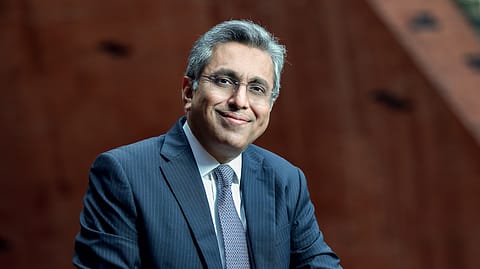Mahindra bets big on the under-penetrated, rural and semi-urban life insurance markets with Manulife JV
The joint venture plans to apply for a license with the IRDAI in about 2 to 3 months, and it will take 15 to 18 months to start operations.

Mahindra & Mahindra aims to tap the rural and semi-urban life insurance markets, which are underserved and underpenetrated with only 2% of life insurance branches, through its joint venture with Manulife, according to Anish Shah, MD and CEO, Mahindra.
Mahindra & Mahindra (M&M) and Canada’s Manulife have agreed to form a 50:50 joint venture to establish a life insurance company in India, subject to regulatory approval. As per the exchange filing, the total capital commitment for the venture is ₹7,200 crore ($800 million)—₹3,600 crore from each partner. The joint venture is expected to begin with an investment of ₹1,250 crore ($140 million) over the first five years.
The announcement builds on the success of Mahindra Manulife Investment Management, the mutual fund joint venture launched in 2020. “We believe that this is a huge space, and there is room for many to play, as we have seen in the banking sector as well, and as we have seen with NBFCs, and the customer base we have, the connections we have, the understanding we have of markets, is something that is going to help us play in a very meaningful way here,” Shah told reporters at a press conference on the sidelines of the joint venture announcement.
Shah revealed that the joint venture expects to apply for a license with the IRDAI in about two to three months. “Realistically, it will take 15 to 18 months for the joint venture to start operations,” he added. The joint venture is targeting life insurance first because it is underpenetrated today. “We see a tremendous opportunity here, which is why we have started with life insurance. If the insurance regulations allow a composite license, that could be a potential upside for the JV, and that is something we will evaluate when that happens. Yes, general insurance is attractive as well, but given the opportunity, we see that it is very meaningful today; we have started with life insurance,” he explained.
The breakeven period for this joint venture is currently pegged at 10 to 12 years, but according to Shah, this is a conservative figure. “We feel confident that we can improve on that. I think once we start operations, and once we start seeing how things are moving, we will have a better sense of the exact time, but at this point, I would just say that we will break even much faster than what most others have done,” added Shah.
Mahindra Finance also looks to leverage its 1,345 branches and its corporate agency license. “With some of the work that has been done there, Mahindra Finance is today very well positioned to now pivot to growth and we have some of these businesses contribute meaningfully, to its bottom line and to its ROA. And therefore, that is going to be a key factor. There are a couple of potential opportunities we feel good about, which we will disclose as time goes on,” Shah said.
According to him, one area that the JV will look at is agency because it is one area where Manulife is very strong. “Manulife is also very strong with affluent customers and products for African customers. So, serving urban customers through agency networks and Manulife’s expertise is going to be a key area, as is the digital channel. This is one where we bring a lot of strengths in, both from the Mahindra standpoint and from Manulife’s global experience. We aim to build a very strong digital channel, which will really grow, with time to come,” he added.
Recommended Stories
Mahindra Finance has earmarked one-third of the dividends it receives for this joint venture. “From a capital allocation standpoint, we are careful about how we spend capital, and where, as this is an extension of financial services,” added Shah.
